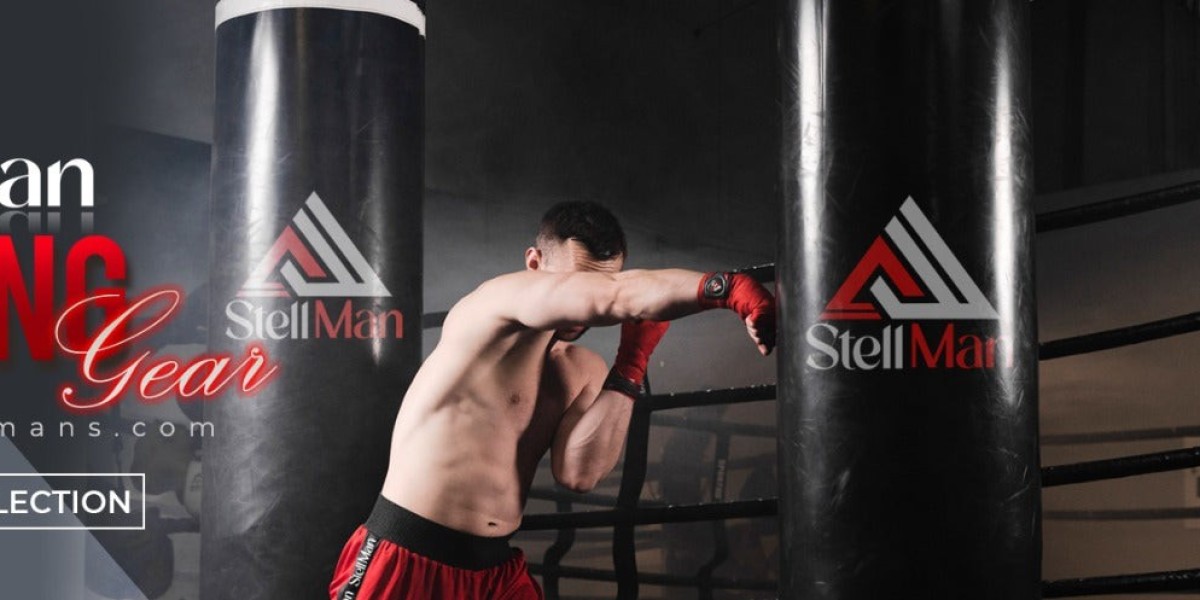Fighting sports such as boxing, Muay Thai, kickboxing, and mixed martial arts (MMA) demand discipline, technique, and above all — the right equipment. Using the proper fighting sports gear is essential not only for safety but also for enhancing performance. The right gloves, wraps, and protective gear can make a huge difference in how effectively you train and compete.
Below is a comprehensive guide to help you select the best fighting sports gear and boxing gloves to maximize your performance in the ring or gym.
1. Understanding the Importance of Proper Gear:
The foundation of any successful fighter begins with the gear they wear. High-quality fighting sports gear ensures both safety and comfort while allowing the athlete to perform at their best. Poor-quality or ill-fitting equipment can cause discomfort, hinder movement, and increase the risk of injury. Whether you’re striking a heavy bag, sparring with a partner, or stepping into competition, every piece of gear you wear contributes to your overall performance. Investing in the right equipment is not an expense — it’s an investment in your longevity and success as an athlete.
2. Choosing the Right Boxing Gloves:
Boxing gloves are arguably the most critical piece of equipment in any combat sport. They protect your hands, knuckles, and wrists from impact while minimizing the risk of injuring your opponent during sparring. However, not all gloves are created equal, and selecting the right pair depends on several important factors.
- Glove Weight and Purpose:
Gloves come in various weights, typically ranging from 8 to 18 ounces. Lighter gloves, such as 8 oz or 10 oz, are commonly used in competition as they allow for faster punches and greater precision. Medium-weight gloves, around 12 oz to 14 oz, are ideal for general training, bag work, and pad drills. Heavier gloves, typically 16 oz or more, are recommended for sparring because they provide added protection and cushioning for both fighters. Choosing the appropriate weight ensures that your training is both safe and effective.
- Material and Durability:
The material of your gloves determines their durability and comfort. Genuine leather gloves are the gold standard for professional fighters because they are durable, flexible, and breathable. They tend to mold to your hand over time, providing a perfect fit. Synthetic leather gloves, on the other hand, are more affordable and suitable for beginners or casual training sessions. When selecting gloves, check for solid stitching, thick padding, and strong wrist support to ensure long-lasting performance.
- Closure Type:
Boxing gloves generally come with two types of closures — Velcro and lace-up. Velcro gloves are the most convenient for everyday training because they are easy to put on and take off. Lace-up gloves offer a more secure and customized fit but require assistance to tie, making them more suitable for professional fights or extended training sessions. The type of closure you choose should depend on your training needs and how often you’ll be wearing the gloves.
3. Supporting Gear for Maximum Protection:
Apart from gloves, other pieces of fighting gear play an essential role in protecting your body and enhancing your performance. Every fighter should have a complete set of protective equipment that fits comfortably and allows freedom of movement.
- Hand Wraps:
Hand wraps are a must-have for all fighters. They protect the small bones in your hands and wrists by providing additional support and stability. Wraps also absorb sweat and reduce friction inside the gloves, extending their lifespan.
- Mouthguard:
A high-quality mouthguard protects your teeth, jaw, and gums from impact. It is an essential piece of safety gear for sparring and competition, helping to prevent concussions and other oral injuries.
- Headgear and Body Protection:
When sparring, proper headgear helps minimize the risk of cuts, bruises, and concussions. Additionally, groin guards and chest protectors are important to safeguard vulnerable areas from heavy strikes. In kickboxing or Muay Thai, shin guards are equally important to protect the legs during kicks and blocks.
4. Selecting Gear According to Your Training Style:
Every fighter has a unique style, and your gear should complement the way you train and compete. For example, power punchers should choose gloves with extra padding around the knuckles and firm wrist support to prevent injuries. Speed-based fighters benefit from lighter gloves that allow quick combinations and fluid movement. Defensive fighters often prefer balanced gloves that provide both mobility and protection for blocking and countering. The key is to match your gear to your specific technique and fighting strategy.
5. Importance of Fit and Comfort:
No matter how high-quality your gear is, if it doesn’t fit properly, it can hinder your performance. Gloves should fit snugly around your hand, with enough space for hand wraps, but not too loose that your hand slides inside. Ill-fitting gloves can lead to blisters, wrist injuries, and reduced punching power. The same rule applies to other protective gear — your headgear, mouthguard, and shin guards should feel comfortable and secure, not restrictive or heavy.
6. Maintenance and Care for Longevity:
To maximize the lifespan and effectiveness of your fighting gear, proper maintenance is essential. After every training session, air out your gloves and wraps to prevent odor and bacteria buildup. Wipe down all gear with antibacterial wipes or a damp cloth. Using glove deodorizers or silica gel packs can also help keep your equipment fresh. Regularly inspect your gear for signs of wear and tear, and replace any damaged items promptly to avoid injury.
7. Balancing Quality and Budget:
While premium brands such as Cleto Reyes, Winning, Hayabusa, Fairtex, and Everlast offer top-tier quality, there are also excellent mid-range options for beginners. Avoid overly cheap gear, as it often lacks proper padding and durability. Set a realistic budget that balances quality and affordability. Remember, durable gear not only lasts longer but also provides consistent performance and protection, ultimately saving you money in the long run.
8. Final Thoughts:
Maximizing performance in fighting sports is not just about strength, endurance, or technique — it’s also about having the right gear that supports every punch, kick, and movement. From boxing gloves to protective equipment, each piece of gear plays a crucial role in your safety and success. The right gear gives you the confidence to push harder, train longer, and perform better, whether you’re in the gym or the ring.
In the world of combat sports, preparation is power — and the right fighting sports gear is your first step toward becoming the best version of yourself.








